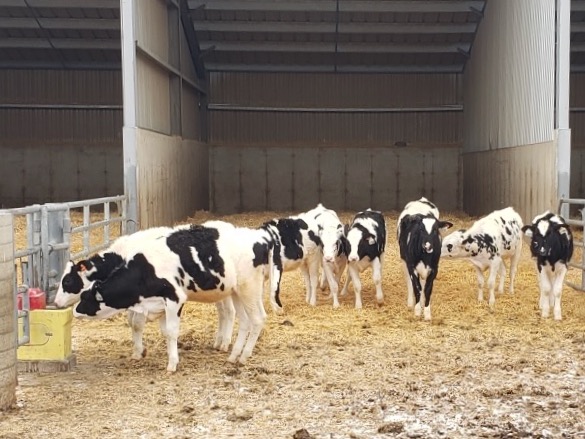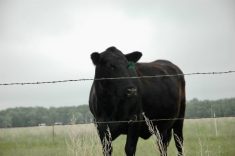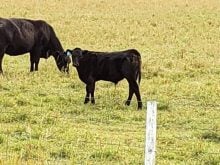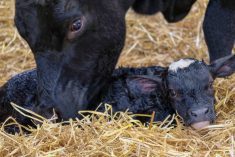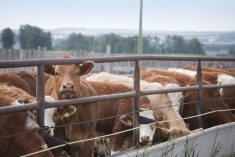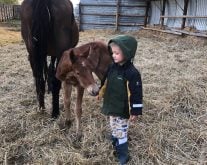I have balanced many dairy heifer replacement diets in the last few months.
It’s a pretty easy exercise once I put it down on a PDF spreadsheet and email it to the dairy producer. I am confident all heifer nutrient requirements are met, given how heifers consume it.
Plus, I want to make these diets as practical as possible, so the producer can make nutritious total mixed rations (TMRs) with ease. A little forethought, even before I press the first keystroke, will go a long way, so well-balanced palatable heifer diets can be achieved to help the animals grow into profitable milk cows.
Read Also

Harvest wraps up and fall work begins
At the Eppich famly ranch in western Saskatchewan, the fall harvest was successful with few breakdowns, cows and calves have been sorted and a new tractor has arrived
As a dairy nutritionist, I advocate three objectives that are the foundation of most well-balanced replacement heifer diets fed through the next 20-23 months:
- Estimate young and bred heifer nutrient requirements to achieve desired heifer growth.
- Promote, and then maintain, good dry matter intake of feed.
- Optimize health and body condition.
When mixing up a load of heifer TMR, I believe we can meet most of their nutrient requirements for good growth, if we meet but don’t exceed dietary targets of 66 to 69 per cent TDN (total digestible nutrients), 14 to 16 per cent protein and a compliment of essential minerals and vitamins. These post-wean diets should support desired growth rates of 1.8-2.2 lbs. per day until young (age four to 12 months) heifers are bred. Then, these dietary specifications might be relaxed by 10 to 15 per cent in order to achieve consistent growth and maintain desired body condition score (BCS) until they are just about to calve and enter the milk-line at 22 to 24 months. Estimated dry matter intake of feed should be around 2.5 to three per cent across all age groups.
No one wants replacement heifers to get fat — so it’s a good idea to keep walking the dairy heifer pens and assessing their body conditions at all stages of development. This means all potential candidates for the future milk-line should not deviate too much from an optimum BCS of three to 3.5 (1 = emaciated, 5 = obese). This is because BCS mirrors how well we match dietary energy to their post-weaning calf growth. This is particularly important when replacement heifers are ready for breeding (that is, showing strong estrus cycles) with target bodyweight of 775-800 lbs. and shoulder height of at least 48-49 inches.
Consequently, I put these few objectives into the real-life TMR diets of two particular dairies: a 300-cow dairy (No. 1 in the table shown here) and a 100-cow dairy (No. 2). Their illustrated heifer replacement diets are split into two: 1A and 2A for unbred heifers of four to 12 months, and 1B and 2B for bred heifers of 12 to 23 months. At 23 months of age, both groups are put on a specific close-up feeding program for one month before calving and being put on the milk line.

A comparison between these bred heifer diets shows barley silage is the foundation of each, with alfalfa and/or grass hay fed as their complements. The larger dairy feeds more basic energy and protein-enriched feed ingredients such as barley and distillers’ grains and a heifer premix in both heifer diets — whereas a heifer premix is also fed in the bred heifer diet of the smaller dairy, but no added grain.
The biggest difference among the diets is that the unbred diet of the smaller dairy uses the TMR of its bred counter-mate and supplements it with an 18 per cent heifer grain pellet.
It is a good way of saving time on the smaller dairy. The producer of the larger dairy told me that because of the capacity of his TMR-mixer (7,000 kg) it just makes sense to make up two separate TMRs, because he has to feed nearly 200 heifers every day. Regardless of these producers making up these TMRs in their own way, all the nutrient requirements are met, and the animals are ready to be put on the milk line at two years of age.
Providing such good nutrition and practical ways of making up these well-balanced TMRs should be transferable to almost any dairy farm. It’s a matter of choosing the best forages and feedstuffs available, formulating them into well-balanced diets and putting them in front of the replacement dairy heifers to eat — then watching the heifers grow!


